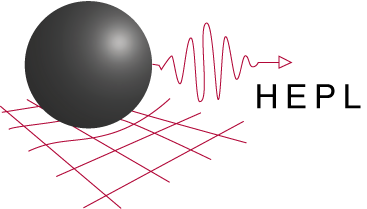News & Events
HEPL Seminar
Emil Mottola
Theoretical Div.
Los Alamos National Laboratory
New Horizons in Gravity: Dark Energy and Condensate Stars
ABSTRACT: Black holes are an apparently unavoidable prediction of classical General Relativity, at least if matter obeys the strong energy condition. However quantum vacuum fluctuations generally violate this condition, as does the eq. of state of cosmological dark energy. When quantum effects are considered, black holes also lead to a number of thermodynamic paradoxes associated with the Hawking temperature and the assumption of black hole entropy. The largest quantum effects in the low energy Effective Field Theory arise from the scalar degrees of freedom associated to the trace anomaly of the stress-energy tensor in curved space. At event horizons these can have macroscopically large backreaction effects on the geometry, potentially preventing a trapped surface from ever forming, replacing it instead with a quantum phase boundary layer, where the effective value of the gravitational vacuum energy density can change. By taking a positive value in the interior of a fully collapsed star, the effective cosmological term removes any singularity, replacing it with a smooth de Sitter interior. The resulting gravitational vacuum condensate star (or gravastar) configuration resolves all black hole paradoxes, and provides a testable alternative to black holes as the quantum mechanical end state of complete gravitational collapse. Gravastars have no singularities, no event horizons, and an entropy of order of typical stellar progenitors proportional to the 3/2 power of M rather than M^2. Unitary time evolution for gravastars is preserved and there is no information paradox. The same physics at the largest distance scales implies that the dark energy of our universe likewise may be a macroscopic finite size effect whose value depends not on Planck scale or other microphysics but on the cosmological Hubble horizon scale itself.
BIO: Emil Mottola did his doctoral work at Columbia in astrophysics, spent some time at the Institute for Advanced Study at Princeton and ITP in Santa Barbara, and is now at the Los Alamos National Laboratory. His research interests include quantum field theory, astrophysics and cosmology, and quantum spacetime. Relevant to the HEPL talk is his interest in alternative theories of the internal structures of black hole-like objects called gravastars.
Location: Physics/Astrophysics Building, Conference Rooms 102 & 103
Friday, July 20 2012, 1:15 to 2:30pm
Light refreshments will be available at 1pm; Presentation begins 1:15pm. Open to All
Join our HEPL Seminar Mailing list!
Send an email to majordomo@lists.stanford.edu and type
subscribe heplseminars user@stanford.edu
in the body of the message where user@stanford.edu is your email address
You will receive an email confirmation. We hope to see you at a HEPL Seminar soon.


